From Supplements to Surgery: Causes of Hair Loss In Women
Hair loss is a common problem that affects millions of people worldwide. Whether you are a man or a woman, losing your hair can be a distressing experience that can impact your self-confidence and overall well-being. Fortunately, there are many effective treatments available that can help slow down or even reverse hair loss. From supplements to surgery, this comprehensive guide will take you through the various options available for hair loss treatment. We’ll explore the benefits and drawbacks of each method, as well as their effectiveness and cost. So whether you’re looking to try a new supplement, switch to a different shampoo, or consider surgical options, this guide will provide you with all the information you need to make an informed decision about your hair loss treatment. So let’s dive in and discover the best approach to help you regain your confidence and feel great about your hair again!
Hair loss in women can occur for various reasons, including genetic factors, medical conditions, and hormonal changes. Losing hair can be distressing for many women and affect their self-esteem and confidence. Female pattern hair loss, which involves gradually thinning hair on the scalp, is one of the most widespread causes of hair loss in women.
As a result, the FDA has approved using the over-the-counter medication Minoxidil (Rogaine) to treat this condition.
Other medical treatments for hair loss include blood tests to identify underlying medical conditions that may be causing hair loss, such as thyroid disease or anemia.
Sometimes, hair loss may be treated with medications or supplements that promote hair growth, such as platelet-rich plasma (PRP), finasteride or biotin. The hair transplant surgery may also be an option for women with bald spots or thinning hair. It is essential to note that these treatments may have side effects and are unsuitable for everyone.
In addition to medical therapies, non-medical home options for treating hair loss include essential oils, onion juice, and laser therapy. Conditions such as androgenetic alopecia and alopecia areata can also cause hair loss and require different treatments. It is essential to consult with a trichologist to determine the best treatment for hair loss in women.
Book Your Free Consultation Today Or Call (647) 560-9233
By providing your phone number you agree to receive informational text messages from laserskin.ca. Consent is not a condition of purchase. Message frequency will vary. Msg & data rates may apply. Reply HELP for help or STOP to cancel.
CAUSES OF HAIR LOSS IN WOMEN - MORE COMMON THAN NOT
Hair loss in women is more complicated than men’s hair loss, as there is usually no single cause for female alopecia. Female hair loss triggers range from as many as 30 medical conditions, hormones, genetics, poor nutrition, lifestyle factors, pregnancy, and menopause. When addressing women’s hair loss, questions about hormone imbalances and thyroid issues need to be discussed as a starting point.
Women can experience many forms of hair loss, usually androgenetic hair loss (AGA) / female pattern hair loss (FPHL) and chronic telogen effluvium (CTC). Most women suffering from hair loss have one or both of these hair loss conditions, AGA, CTE, or AGA + CTE).




















Causes of Hair Loss in Women
Hair loss can occur due to a variety of reasons. Some of the most common causes include genetics, hormonal changes, medical conditions, medications, and physical or emotional stress. Male pattern baldness, also known as androgenetic alopecia, is the most common type of hair loss and is primarily caused by genetics. Women may also experience hair loss due to genetics, but hormonal changes during pregnancy or menopause can also be a contributing factor.
Other medical conditions such as thyroid disorders, autoimmune diseases, and scalp infections can also cause hair loss. Certain medications such as chemotherapy drugs can also lead to hair loss. Physical and emotional stress can also trigger hair loss by disrupting the natural hair growth cycle. Identifying the underlying cause of hair loss is essential to determine the most effective treatment.
Different Types of Hair Loss
There are several types of hair loss, and each type requires a different approach to treatment. Male pattern baldness is the most common type of hair loss and is characterized by a receding hairline and thinning hair on the crown of the head. Female pattern baldness is similar to male pattern baldness, but hair loss is more diffuse and occurs throughout the scalp.
Alopecia areata is an autoimmune disorder that causes patchy hair loss on the scalp and other parts of the body. Telogen effluvium is a condition where hair shedding occurs due to physical or emotional stress. Trichotillomania is a hair-pulling disorder that can lead to hair loss. Traction alopecia is hair loss that occurs due to excessive pulling or tension on the hair.
How to Prevent Hair Loss
While some causes of hair loss may be beyond our control, several preventative measures can be taken to minimize the risk of hair loss in women. Maintaining a healthy diet rich in vitamins and minerals, getting regular exercise, and reducing stress are all essential for healthy hair growth.
Avoiding harsh hair treatments such as hot oil treatments and chemical relaxers, as well as limiting the use of heat styling tools can also help prevent hair damage and breakage. Using a mild shampoo and conditioner, and avoiding over-washing can also help maintain healthy hair.
WHAT IS ANDROGENETIC HAIR LOSS?
Androgenetic hair loss or androgenetic alopecia (AGA) is women’s most common form of hair loss. This hair loss is characterized by progressive and slow diffused hair loss all over the scalp area. It is also the most common form of hair loss in men. Hormones and genetics appear to be the leading causes of AGA in women. Environment, age, nutrition, and stress can also play a role in FPHL.
Women can inherit the gene for pattern baldness from either the mother or father. Hormones in both women and men cause AGA hair loss. Dihydrotestosterone (DHT) is the specific hormone that causes hair loss. DHT is created from testosterone by an enzyme called 5-alpha reductase. This enzyme can also be made from DHEA, a hormone more common in females. DHT is found in the hair follicles, skin, and prostate. The DHT’s actions and the hair follicles’ sensitivity to DHT causes hair loss.
Some females carry the genes that make hair follicles susceptible to destruction due to the male hormone DHT. For females, besides hereditary pregnancy, an imbalance of hormones caused by ovarian cysts, taking high androgen index birth control pills, and menopause, can also cause FPHL. After menopause, hair loss is more prevalent as a women’s sex hormone estrogen levels drop.
Non-Surgical Hair Loss Treatments – Supplements, Shampoos, and Topical Treatments
Non-surgical hair loss treatments include supplements, shampoos, and topical treatments. These treatments can help slow down hair loss and promote healthy hair growth. Supplements such as biotin, iron, and vitamin D can help support healthy hair growth. Shampoos and topical treatments containing ingredients such as ketoconazole, caffeine, and minoxidil can also help promote hair growth.
While these treatments can be effective, they may not work for everyone, and results may vary. It’s essential to speak to a healthcare professional before starting any new supplement or topical treatment.
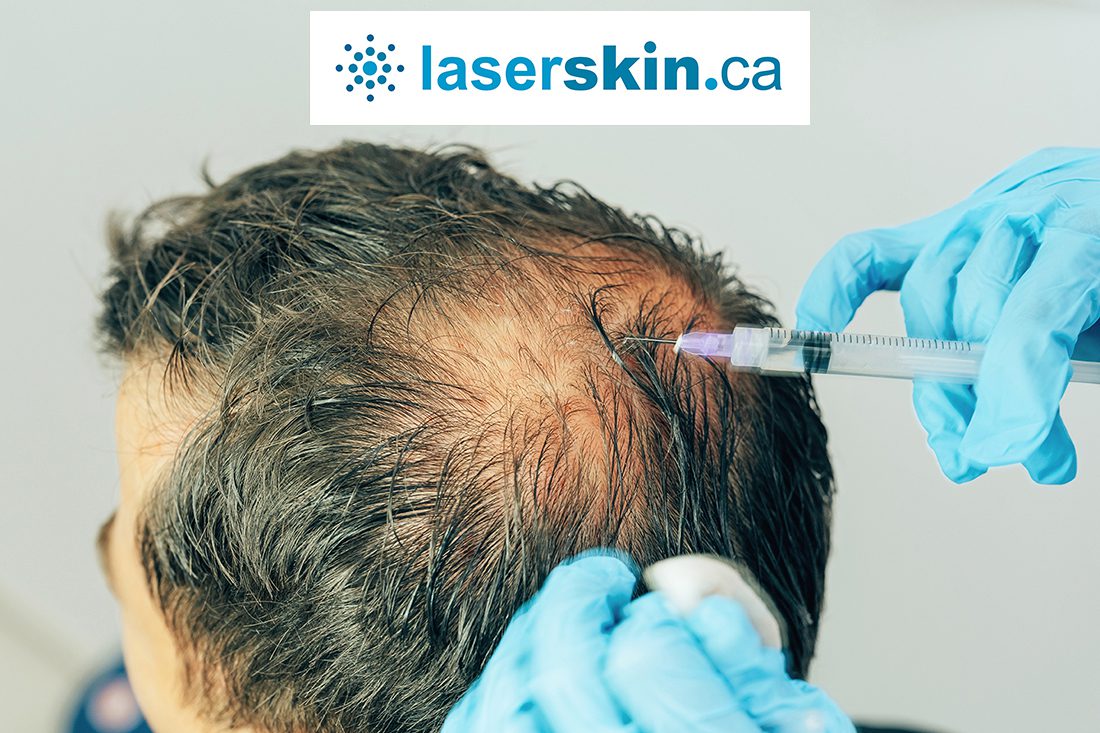
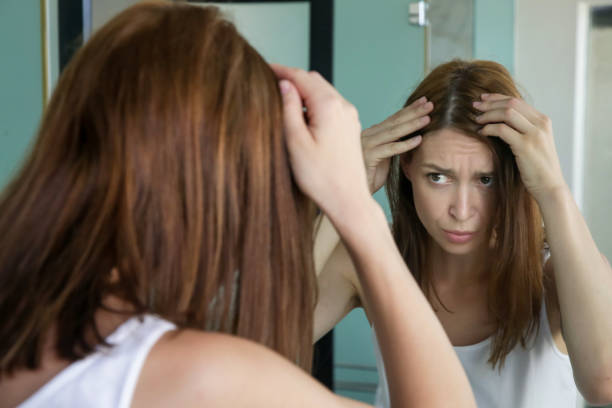
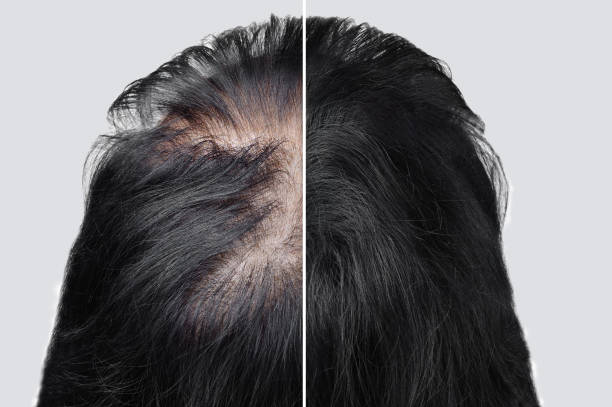
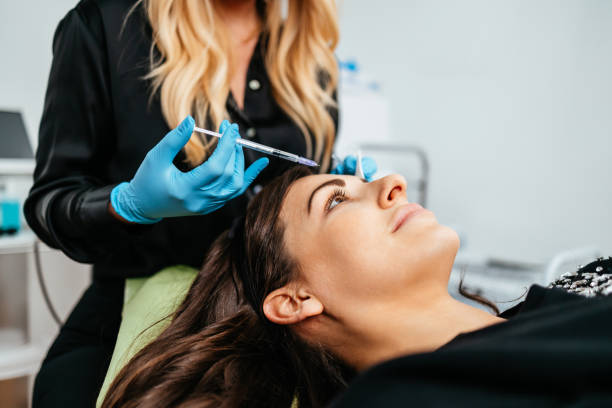
WHAT IS TELOGEN EFFLUVIUM?
Telogen effluvium (TE) is a type of hair loss characterized by a sudden and pronounced amount of hair loss. TE is a temporary hair loss condition defined as a transitory increase in the number of hairs in the resting phase of the cycles in hair growth. A major physical trauma, surgery, high fever/illness, significant psychological stress, extreme diet change, extreme weight loss, chi or menopause usually cause TE. Telogen effluvium usually resolves completely without any treatment over several months. The average duration of TE is approximately 100 days (between 3 to 6 months), after which the hair starts to grow again.
WHAT IS CHRONIC TELOGEN EFFLUVIUM?
Chronic telogen effluvium (CTE) is TE that lasts longer than six months. Women with a long history of hair shedding may be experiencing chronic telogen effluvium. CTE shows the following characteristics: abrupt onset of hair loss in the beginning, special memory of the start, duration over six months, and positive pull test results in four areas of the scalp. CTE is characterized by excessive, abrupt, alarming, diffuse shedding of hair that fluctuates over many years.
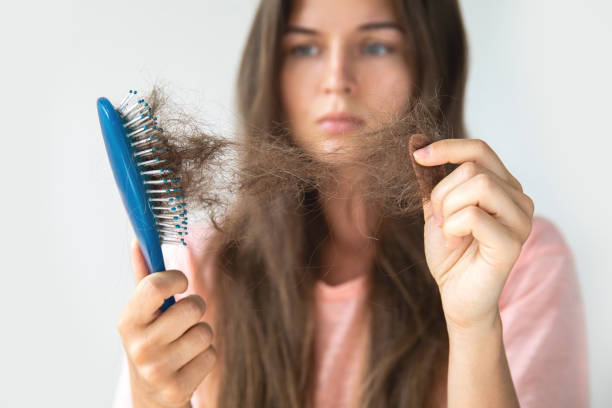

CAN IRON DEFICIENCY CAUSE HAIR LOSS?
If a woman is low in iron, the body cannot produce hemoglobin in the blood very well. Hemoglobin carries oxygen for the growth and repair of cells, including the cells that stimulate hair growth. Vitamin C plays a vital role in the intestinal absorption of iron due to its chelating and reducing effect. Vitamin C assists in iron mobilization and intestinal absorption. Therefore, taking vitamin C for hair loss associated with iron deficiency patients is essential.
WHAT IS THE BEST TREATMENT FOR HAIR LOSS IN WOMEN
At the Trichology Centre in Toronto, we believe the best non-surgical strategy for FPHL is combination therapy. By combination therapy, we mean doing several things rather than just one treatment. Variables in hair loss treatment include the age of onset, gender, duration of hair loss, rate of progression and degree of hair loss. There is no cure for hair loss, only maintenance. Our hair loss clinic aims to stop hair loss or hair shedding and stimulate hair regrowth by doing combination therapy.
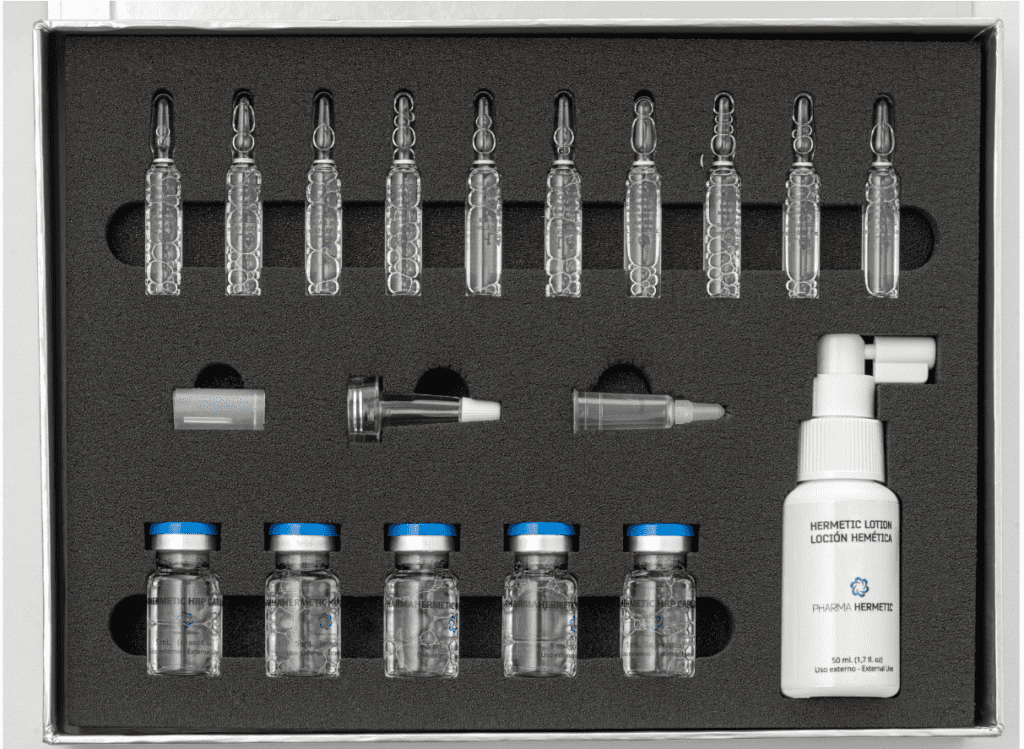
WHAT IS SCALP MICROPIGMENTATION?
Scalp micropigmentation or hair tattoo has become increasingly popular over the years as more and more people become aware of it. It is a procedure where the tiny ink pigment is inserted into the scalp with a small vibrating needle to mimic the look of natural hair follicles. The process usually requires 3 to 4 sessions spaced 1-2 weeks apart.
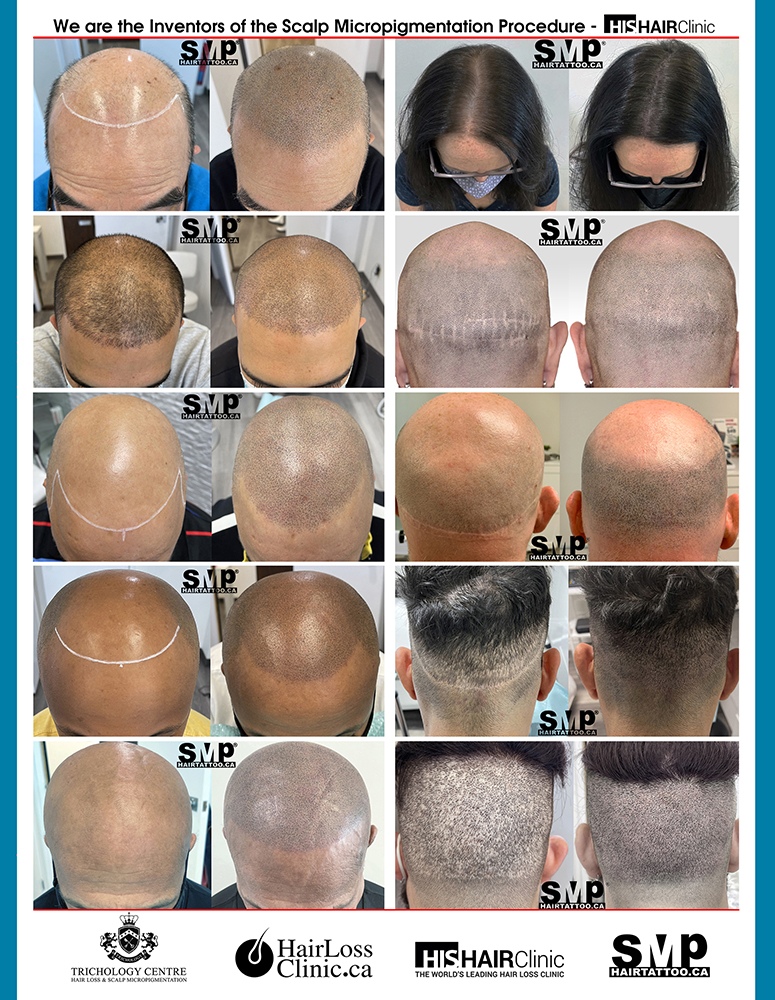
WHAT ARE THE AVAILABLE THERAPIES FOR HAIR LOSS IN WOMEN?
For men, one drug that has proven to help with androgenetic hair loss is finasteride. Finasteride (Propecia) is a 5a-reductase type II inhibitor approved to treat male androgenetic alopecia. For women, there is a potential risk of teratogenicity in a male fetus during pregnancy. The efficacy of finasteride for female pattern hair loss is still controversial.
So, what are the other options then for women? At Trichology Centre, our combination therapies include PRP (platelet-rich plasma) therapy, laser therapy, and AAPE stem cell therapy. We also offer hair loss shampoos, topical sprays, and oral hair regrowth tablets.
If you suffer from FPHL, we recommend you fill out our FREE online hair loss assessment form.
Hair Loss Medications – Finasteride and Minoxidil
Finasteride and minoxidil are two FDA-approved medications for hair loss treatment. Finasteride works by blocking the production of dihydrotestosterone (DHT), a hormone that contributes to hair loss. Minoxidil works by increasing blood flow to the hair follicles, promoting hair growth.
These medications have been clinically proven to be effective in treating male pattern baldness, and they may also be effective in treating female pattern baldness. However, these medications can have side effects, and it’s essential to speak to a healthcare professional before starting any new medication.
Hair Transplant Surgery – FUE and FUT
Hair transplant surgery is a surgical procedure that involves transplanting hair follicles from one area of the scalp to another. There are two types of hair transplant surgery – follicular unit extraction (FUE) and follicular unit transplantation (FUT).
FUE involves removing individual hair follicles from the donor area and transplanting them to the recipient area. FUT involves removing a strip of scalp from the donor area and transplanting it to the recipient area. Both procedures are effective in treating hair loss, but they have different benefits and drawbacks.
Recovery and Aftercare for Hair Transplant Surgery
Recovery and aftercare are essential for a successful hair transplant surgery. It’s important to follow the surgeon’s instructions for post-operative care, including avoiding strenuous activity and keeping the scalp clean and dry. Pain and swelling are common after surgery, but these can be managed with pain medication and ice packs.
It’s also important to avoid direct sunlight and wear a hat or sunscreen to protect the scalp from the sun. Hair transplant results may take several months to become visible, but most patients can expect to see significant improvement within six to twelve months.
Combining Hair Loss Treatments for Optimal Results
Combining different hair loss treatments can be an effective way to achieve optimal results. For example, using a hair loss medication such as finasteride or minoxidil in conjunction with a hair transplant surgery can maximize the effectiveness of the procedure.
It’s essential to speak to a healthcare professional to determine the best combination of treatments for your specific hair loss condition.
Choosing the Right Hair Loss Treatment for You
Determining the optimal treatment for hair loss in women hinges on various factors, including the causes of hair loss in women, the specific type of hair loss, its severity, and individual preferences. Supplements and specialized shampoos could offer viable solutions for individuals facing mild to moderate hair loss, avoiding surgical interventions. Conversely, hair transplant surgery could be more fitting for individuals grappling with severe hair loss triggered by the causes of hair loss in women.
Conducting thorough research, consulting with healthcare professionals, and meticulously evaluating the pros and cons of each treatment option are essential steps before committing to a course of action.
The experience of hair loss can be emotionally challenging, yet many effective treatments are available to either decelerate or potentially reverse its effects. This comprehensive guide navigates through various remedies, from supplements to surgical interventions, to address what causes hair loss in women and the spectrum of treatment choices. By comprehending the diverse causes and types of hair loss and exploring the available interventions, individuals can make informed decisions to reclaim confidence and embrace a positive relationship with their hair again.
FREE ONLINE HAIR LOSS ASSESSMENT FORM
Are you experiencing any hair loss or scalp issues? Get a Certified Trichologist to assess and recommend the best hair loss treatment for your condition in Toronto and Greater Toronto Area. Please complete our online Trichology Assessment Form to get started now.


